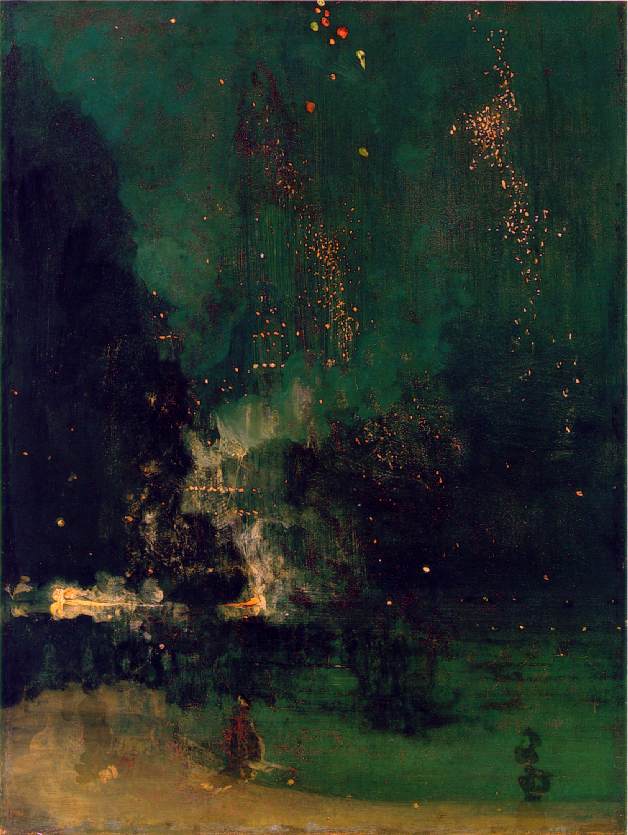“Painter, etcher and lithographer. Born in Lowell, Massachusetts, the son of an engineer.
As a boy lived in both Russia and England. In 1851 entered West Point Military Academy.
Left to work as a cartographer for the Navy, where he learnt the technique of etching.
In 1855 went to Paris as a student. By 1858 he had completed his ‘French Set’ of
etchings of Paris. Met Degas and Fantin-Latour; much influenced by Courbet. In 1859
moved to London and began on the first ‘Thames Set’. His paintings of this period
still reflect the influence of Courbet and Manet. Moved in 1863 to 7 to Lindsay Row,
Chelsea, where he met Harry and Walter Greaves, and also Rossetti. The influence
of Japanese art became apparent in his pictures of the 1860s. In 1866 visited Valparaiso.
In the 1970s he began to paint his Nocturnes, and also produced some of his finest
portraits. In 1877 exhibited ‘Nocturne in Black and Gold- The Falling Rocket’ at
the first exhibition of Grosvenor Gallery. The picture was attacked by Ruskin, who
accused Whistler of “flinging a pot of paint into the public’s face”. Whistler retaliated
by suing Ruskin for libel. The trial took place in 1878, and Whistler was awarded
one farthing damages. The cost of the action led to bankruptcy in 1879, and the sale
of the White House in Tite Street, built for him in 1877 by E.W. Godwin. 1879-80
visited Venice for the first time, where he produced some of his finest etchings
and pastels. 1885 delivered his famous Ten o’clock Lectures. 1886-8 President of
the RBA. 1888 married Beatrix Godwin. 1892 settled in Paris. 1897 President of the
International Society of Sculptors, Painters and Gravers. 1898-1901 ran his own art
school, the Académie Carmen, in Paris. Exhibited in the Royal Academy from 1859 to
1879, Society of British Artist, Suffolk Street, Grosvenor Gallery and elsewhere.
As a painter Whistler was primarily interested in the exploration of tones and colour
relationships, within a strict and formalized decorative pattern. In this he often
shows an affinity with such academic English artists as Albert Joseph Moore. The
titles of his pictures, Arrangements, Nocturnes, Symphonies, etc., reflect his conscious
aestheticism and rejection of the Victorian idea of subject. He was also a watercolourist
and a pastellist, but perhaps his greatest contribution to the nineteenth-century
was his etching. With justification, he is now classed with Rembrandt and Goya as
one of the greatest masters of etching. A wit and dandy, he was one of the most colourful
personalities of the nineteenth-century, but his combative nature led his to many
feuds and lawsuits.”
(Biographical source: Wood, Christopher. The Dictionary of Victorian Painters.)




